Even the smallest software development project requires a dozen IT specialists, numerous meetings, planning sessions, and discussions, as well as achieving rigorous deadlines.
As a result, numerous software development approaches and frameworks are used by development businesses. They help to standardize the process by making it apparent to both clients and internal teams what is going on with the product.
In this post, we’ll look at some of the most prominent software development techniques, such as Agile, Waterfall, and Lean, as well as some of their most well-known frameworks. Contact Auxano Global Services for more information.
Software Development Methodologies
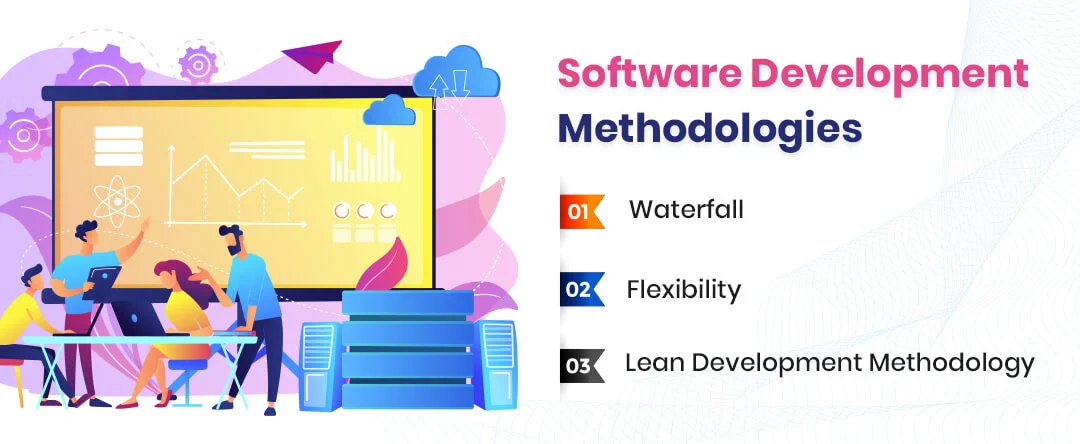
A development methodology is a method for creating software.
Companies that provide software development services can create products in a variety of methods, including moving from more important to less important duties, alphabetically, by preference, and so on. Hire Dedicated Developers can work two days a week, five days a week, or nonstop until they’re burned out.
Different software development approaches aid in the organization of work, laying out which aspects of functionality will be completed when they will be completed, and when the results will be presented to the owners.
Waterfall
For a long time, the waterfall was the ‘traditional’ development approach: from 70x to 00x. This process is very rigid and linear, with specific deliverables at each stage. The Waterfall model only moves forward: a new stage begins when the previous one is completed. If you’re in the coding process, for example, there’s no way to go back and change the design of the product.
Also Read: Waterfall Vs Agile Methodology: Which Is Right For You?
The Six Steps of Waterfall Development are as follows:
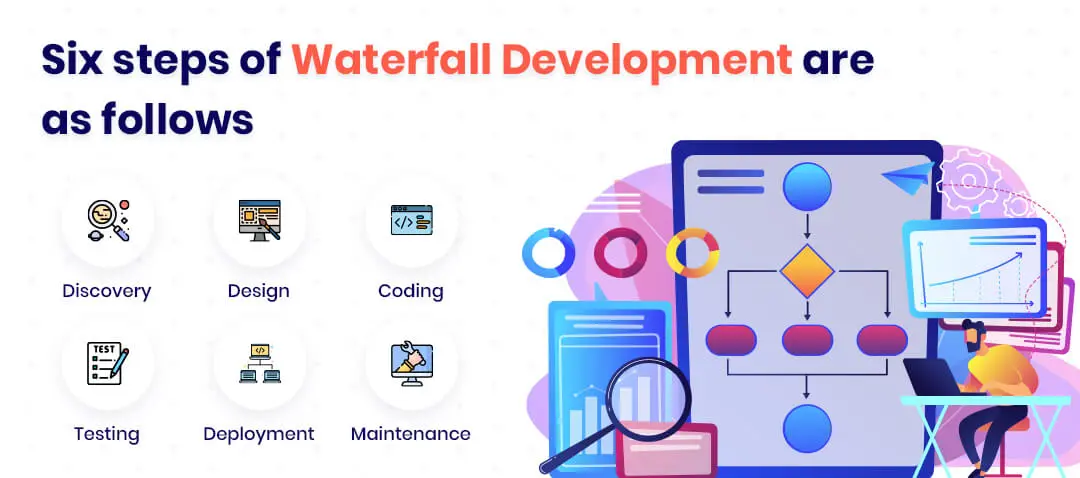
Discovery: The team compiles a comprehensive list of project needs.
Design: Solution architects plan out how the program will be built and how it will function.
Coding: Developers create UI designs based on the needs of the client.
Testing: QA engineers look for faults and inconsistencies throughout the entire program.
Deployment: Developers put together various components of the project and present stakeholders with a demo version.
Maintenance: Support and bug fixes are provided by the team.
Benefits:
- Methodology that is simple, functional, progressive, and analytical.
- Excellent for fixed-price contracts or those that necessitate extensive documentation.
- After the discovery stage, it requires minimal client interaction.
- Estimating the ultimate budget/schedule is easier.
Drawbacks:
- For the entire project, exact requirements are required.
- It necessitates a protracted discovery period.
- It’s difficult to make modifications beyond the planning stage if you’re not flexible.
- The final result may fall short of the client’s expectations.
Flexibility
Agile is one of the most widely used software development approaches today, with adoption ranging from tech startups to Apple. Agile is used in the development of government software as well (acceptance rate). Agile divides development into a few iterations called sprints, rather than producing the full product in one go like Waterfall. A sprint usually lasts 1-4 weeks. The hire software development team spends that time designing, coding, and testing complete features that can be released as a working product.
The sprint’s goal is to get a working product out the door. If the team dedicates a sprint to a single sign-on, for example, the feature must be tested and functional by the conclusion of the sprint.
Advantages of Agile:
- Releases occur frequently (1-2 per month).
- Changes are simple and flexible.
- A working product is released at the end of each sprint.
- Because the client is more involved in the development process, there is a greater probability that all of their criteria will be met.
- The team collaborates closely and has a clear understanding of their roles.
Drawbacks:
- It necessitates careful management.
- There is no set end date for the project and no final price tag.
- Experienced and responsible team members are required.
Lean Development Methodology
The MVP strategy is a popular term for the lean approach. In Lean, a team launches a bare-bones version of a product, learns from customer feedback, and then improves or changes the product based on that feedback.
Software Teams and Consumers can Benefit From Seven Lean Practices:
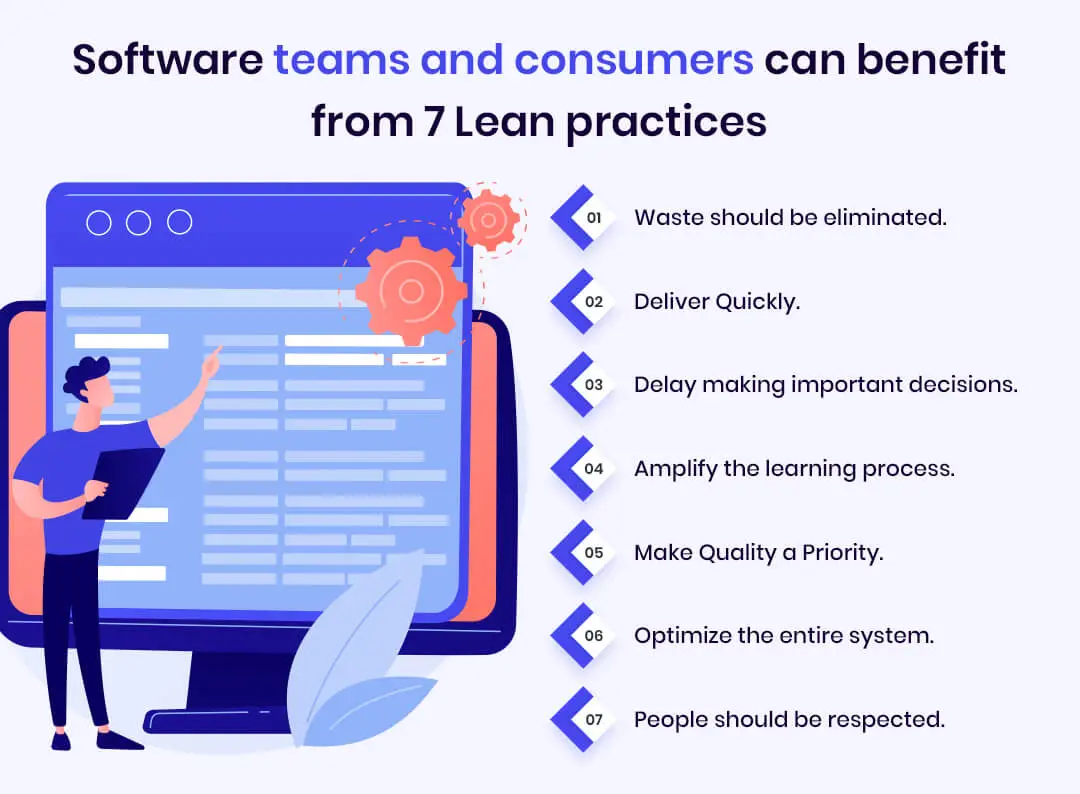
Waste should Be Eliminated: Extra features, partially completed work, delays, faults, and other wasteful activities are examples of wasteful activities in software development.
Deliver Quickly: Build an MVP product in the shortest amount of time possible, identifying and eliminating bottlenecks in the team.
Delay Making Important Decisions: Don’t make a critical decision before you know all of the facts.
Amplify the Learning Process: Gather input so that the product can be tailored to the needs of the users.
Make Quality a Priority: At the coding level, work on improving program quality.
Optimize the Entire System: Concentrate on enhancing the complete workflow rather than just one aspect of it.
People Should be Respected: Encourage team members to have healthy and constructive talks. Startups that haven’t yet developed a finished product are using the lean methodology. They have a better chance of learning more from real market metrics by releasing only MVP features. They figure out what works and what doesn’t for users before releasing fresh updates to fix or improve the software.
Pros of Lean:
- Works with startups in their early stages.
- Focuses on rapid growth and increased efficiency.
- The quickest time to market.
Cons of Lean:
- The client must have faith in the team’s decisions.
- Detailed documentation is required.
- To document requirements, a business analyst must be involved.
Comparison of Software Development Processes and Methodologies
It is up to you to decide which approach or framework to use for your project. There is no such thing as a universal plan that can be applied to each situation. If you’re working on a startup, Agile or Lean can be a better fit because of their flexibility you can change the scope of the project at any time. Waterfall may appear to be a better alternative if you’re working on an enterprise-level desktop program where management expects stringent and extensive documentation.
The Following is a List of Software Development Approaches and When They Should be Used:
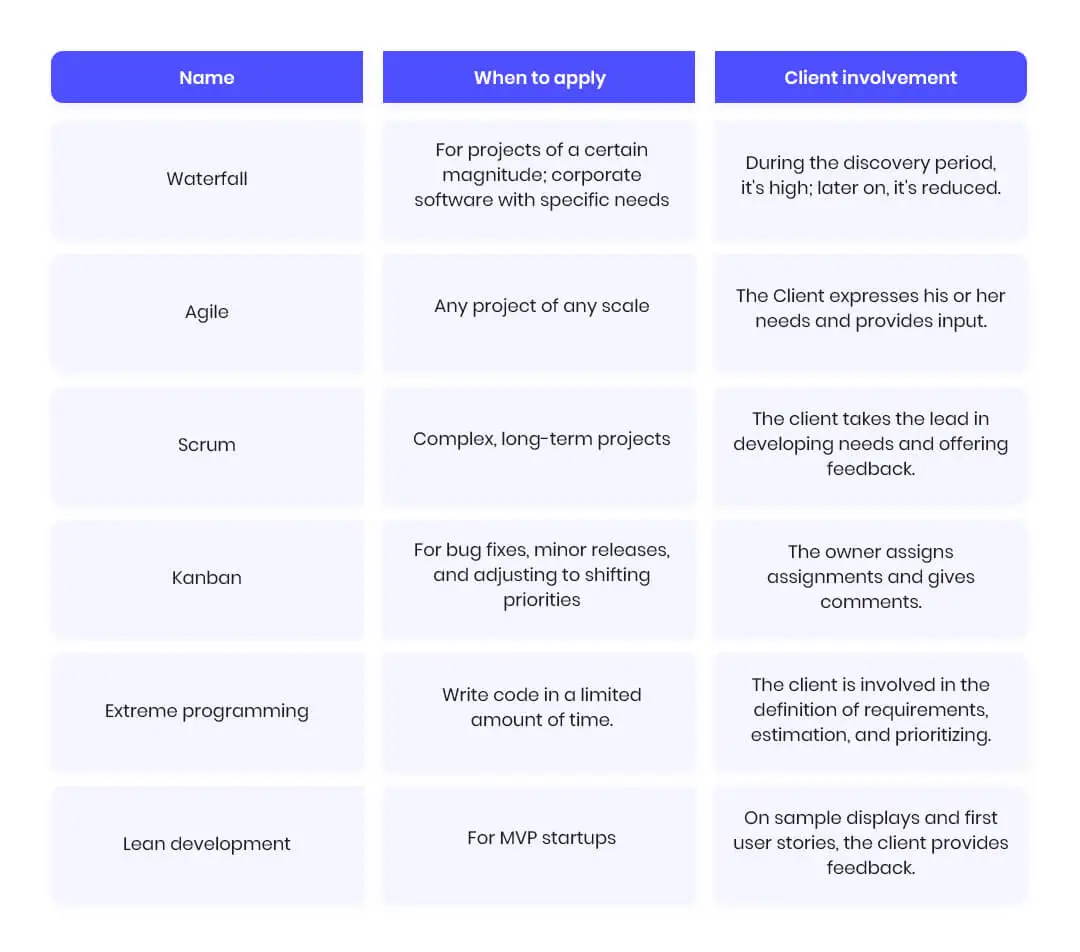
Auxano Global Services Knowledge And Experience
For years, Auxano Global Services has been a reliable software development partner for businesses all around the world. We operate as an offshore software development service provider in 90% of our projects, achieving success not just in delivering software, but also in being a part of our partners’ corporate culture, establishing truthful communication, and adding value to their enterprises. Our firm assisted in the remote funding of startups that were ultimately bought by larger firms and evolved into enormous corporations.

We use the Agile/Scrum strategy in software development and know-how to arrange our committed teams to produce successful outcomes. We know how to become the software development partner you want whether you’re a little business or a large corporation build a capable software development team of professionals, and assist you in creating the product of your dreams!
Frequently Asked Questions
-
1. What does software development methodologies means?
A development methodology defines a method for creating software. You can use the waterfall process to move incrementally from planning to release. Or use the agile methodology to deliver a tiny portion of functionality every few weeks.
-
2. Why choose software development methodologies?
Different software development approaches and frameworks are used by development companies. They help in process standardization and make it evident to both internal teams and clients what is happening with the product.
-
3. How many different software development approaches exist
Different programmers utilize a variety of software development approaches. Even you can establish a methodology that will improve the way you produce software.
However, the following statistics apply when discussing the perfect software development methodology:
- Waterfall — 9.6%
- Scrum — 23.1%
- Agile — 61.5%
- Others — 5.8%



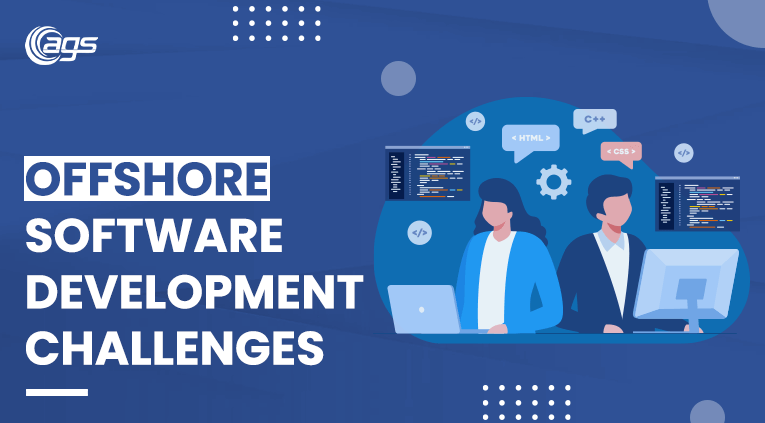
![5 Reasons To Hire AngularJS Developers to Build Logistic Software Solutions [2023]](https://www.auxanoglobalservices.com/agsresources/wp-content/uploads/2023/07/5-Reasons-To-Hire-AngularJS-Developers-to-Build-Logistic-Software-Solutions.jpg)
